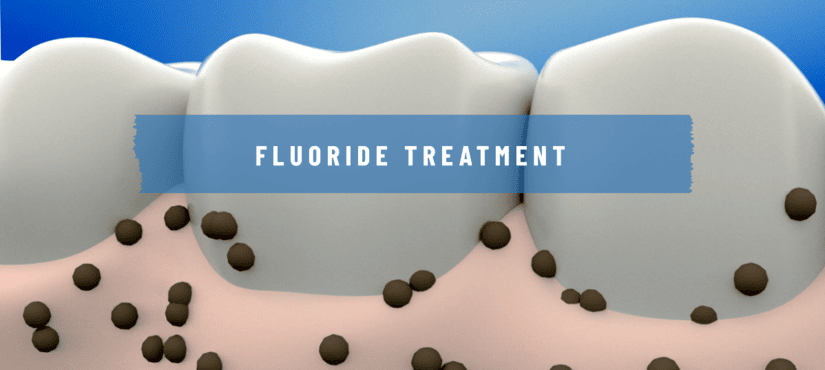Fluoride Treatment: Benefits And Side Effects

Fluoride treatment is an important part of dental care. It helps to prevent tooth decay and strengthen teeth. But what are the benefits and potential side effects of fluoride treatment?
In this article, we’ll look at the benefits, potential side effects, how it works, who should have it, how often to have it done, and what to expect during a fluoride treatment. We’ll also discuss alternatives to fluoride treatment.
So if you’re considering fluoride treatment, you’ll want to read this article to learn more.
Fluoride treatment is an effective way to protect your teeth from decay and damage. It can help to prevent cavities, reduce sensitivity, and even reverse early signs of decay. But it’s important to understand the potential side effects of fluoride treatment.
Knowing the potential risks can help you make an informed decision about whether or not fluoride treatment is right for you.
What is Fluoride Treatment?
You may have heard about it, but do you know what fluoride treatment is and how it can help you?
Fluoride treatment is a method of providing extra fluoride to the teeth in order to help protect them from cavities. Fluoride is a mineral found naturally in many foods and water, but sometimes it’s not enough.
Fluoride treatments are often applied to the teeth at a dental office. It can be applied in the form of a varnish, foam, or gel and can help strengthen enamel and reduce the risk of cavities.
It’s a safe and effective way to help protect the teeth from decay and can help keep the teeth healthy and strong.
Benefits of Fluoride Treatment
Receiving regular dental care with fluoride can help keep your teeth strong and healthy. Fluoride treatment can offer a number of benefits for your oral health, including:
- Strengthening tooth enamel
- Reducing the risk of tooth decay
- Preventing cavities
- Reducing the amount of bacteria in the mouth
- Slowing the progression of existing cavities
Fluoride also helps to reduce the amount of acid produced in the mouth, which can help to protect against the development of cavities and other oral health problems. Regular fluoride treatments can help to keep your teeth strong and healthy, and can even help to improve the appearance of your smile.
Potential Side Effects of Fluoride Treatment
Though fluoride treatments can provide many benefits to your oral health, there are potential risks associated with them as well. If not administered correctly, fluoride treatment may cause irritation to the mouth, such as a burning sensation, soreness, or changes in taste.
In more severe cases, it may also cause staining of the teeth. Too much fluoride can lead to a condition called fluorosis, which causes spots or streaks to appear on the teeth. Fluorosis is usually a cosmetic issue, but it can cause the enamel of the teeth to become weaker.
Fluoride treatments should only be administered by a qualified dental professional, and you should always follow their instructions. It’s also important to get regular checkups with your dentist to monitor the effects of the treatment.
With proper care and monitoring, you can reduce the risk of experiencing any side effects from fluoride treatment and enjoy its many benefits.
How Does Fluoride Treatment Work?
Fluoride treatments work by introducing small amounts of fluoride to the teeth, which helps to strengthen the enamel and protect against cavities. Fluoride is naturally found in water and food supplies, but in some areas, it may not be present in adequate amounts to provide the necessary protection. This is when fluoride treatments come in.
They can be applied to the teeth in the form of a gel or foam, or added to a mouth rinse. With regular treatments, fluoride can help to remineralize teeth and reduce the risk of cavities.
Fluoride treatments are safe and effective when used as directed. Most treatments are applied quickly by a dental professional and only take a few minutes. Some treatments may require multiple applications over the course of several weeks or months.
It’s important to follow your dentist’s instructions to ensure you’re receiving the full benefits of fluoride treatments.
Who Should Have Fluoride Treatment?
For those who want to strengthen their enamel and reduce the risk of cavities, fluoride treatments can be a great option. Generally, the treatment is recommended for people who are at a higher risk for cavities, such as those with weakened enamel, a history of cavities, or dry mouth.
Kids who are still in the process of developing their permanent teeth and adults who have a higher risk of developing cavities due to diet or lifestyle may benefit from the treatments. Fluoride treatments can also be recommended for people who have a hard time keeping up with their dental hygiene routine.
The treatments help to keep the teeth protected from cavities and decay even with poor dental hygiene habits. Additionally, those who live in areas with low natural levels of fluoride in the water may benefit from fluoride treatments.
How Often Should Fluoride Treatment Be Done?
Taking care of your teeth is essential for a healthy, beautiful smile, and fluoride treatments can help to ensure that your teeth stay strong and cavity-free over time.
How often you need a fluoride treatment depends on your individual risk factors for cavities and the advice of your dentist. Generally, if you’re at low risk for cavities, your dentist may recommend that you have a fluoride treatment every three to four months. If you’re at a higher risk for cavities, your dentist may recommend that you have a fluoride treatment every month.
Your dentist may also recommend that you use a fluoride rinse or gel at home in addition to the professional treatments. This can help to keep your enamel strong and protect your teeth from cavities.
Make sure to follow your dentist’s advice and ask any questions you may have about your fluoride treatments. With regular fluoride treatments, you can keep your teeth healthy and strong.
What Should I Expect During a Fluoride Treatment?
At your next dental check-up, you can expect to receive a fluoride treatment to help keep your teeth healthy and strong. During the treatment, your dentist will apply a fluoride solution, foam, or varnish to your teeth for about one minute.
You can expect the following three steps during the treatment:
- Your dentist will clean and dry your teeth.
- Your dentist will apply the fluoride solution, foam, or varnish.
- You’ll be asked to keep the solution on your teeth for at least one minute.
After the treatment, your dentist will recommend that you avoid eating or drinking for at least 30 minutes to ensure that the fluoride can be fully absorbed into your teeth. During this time, your dentist may suggest brushing your teeth with a special fluoride toothpaste or using a fluoride rinse to further strengthen your teeth.
Following your fluoride treatments, you should expect to have a healthier, stronger, and more beautiful smile.
Are There Any Alternatives to Fluoride Treatment?
You may be interested in exploring alternative dental care options to help keep your teeth healthy and strong. Fluoride treatment is one way to protect your teeth from decay, but there are other options that can be used instead.
One alternative is to use a fluoride rinse or gel. These can be purchased over the counter and applied directly to your teeth. This will help to protect your teeth from decay, but it won’t be as effective as a professional fluoride treatment.
Another option is dental sealants. This involves placing a thin plastic coating over the teeth to help protect them from decay. This is usually done after a professional cleaning. It can help to keep bacteria from getting into the teeth and causing damage. It is an effective way to protect your teeth, but it doesn’t provide the same level of protection as a fluoride treatment.
Conclusion
You’ve learned about the benefits and risks of fluoride treatment, so it’s time to decide if it’s right for you. Fluoride treatment is a great way to protect your teeth from cavities and other problems. However, it’s important to talk to your dentist about potential side effects and alternatives.
If you decide to proceed with fluoride treatment, your dentist can help you determine the best frequency and explain what to expect during the procedure. With the right information, you can make an informed decision that’s best for your oral health.









